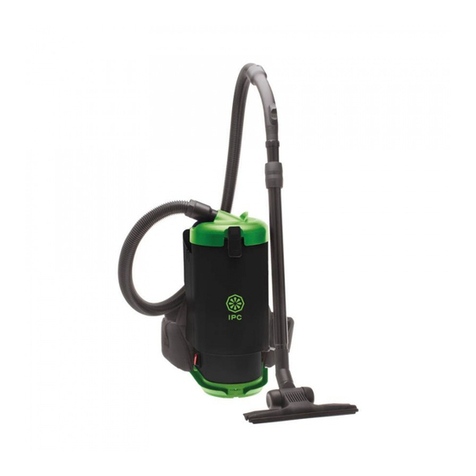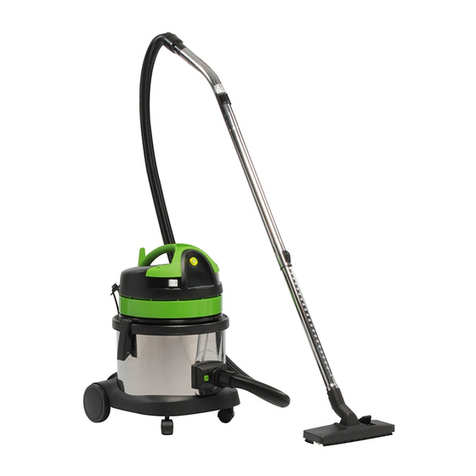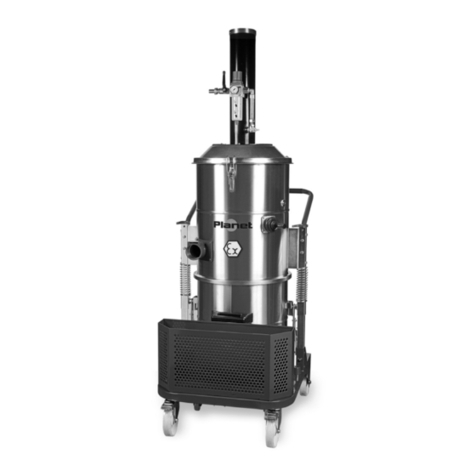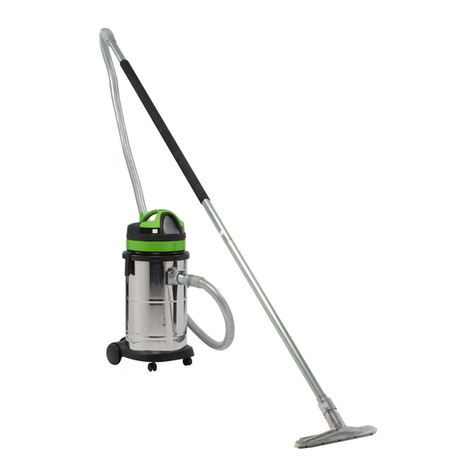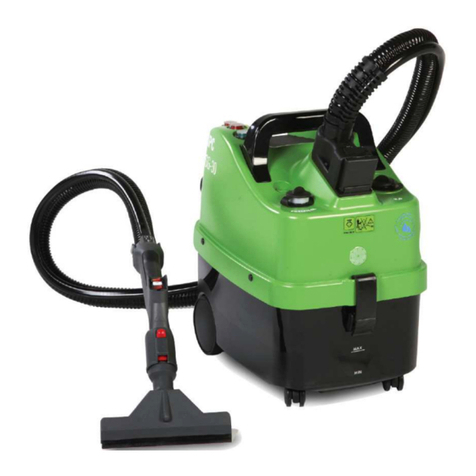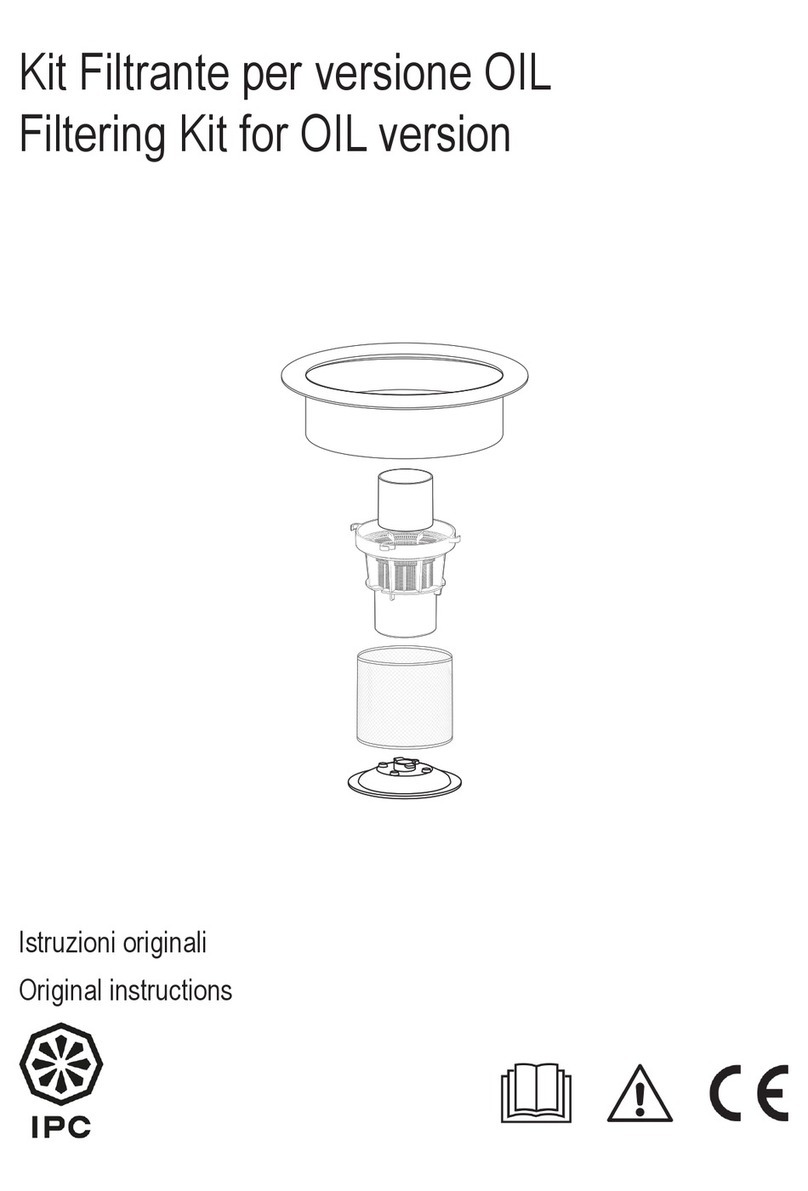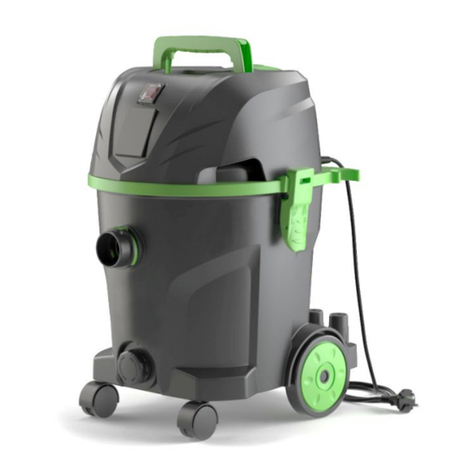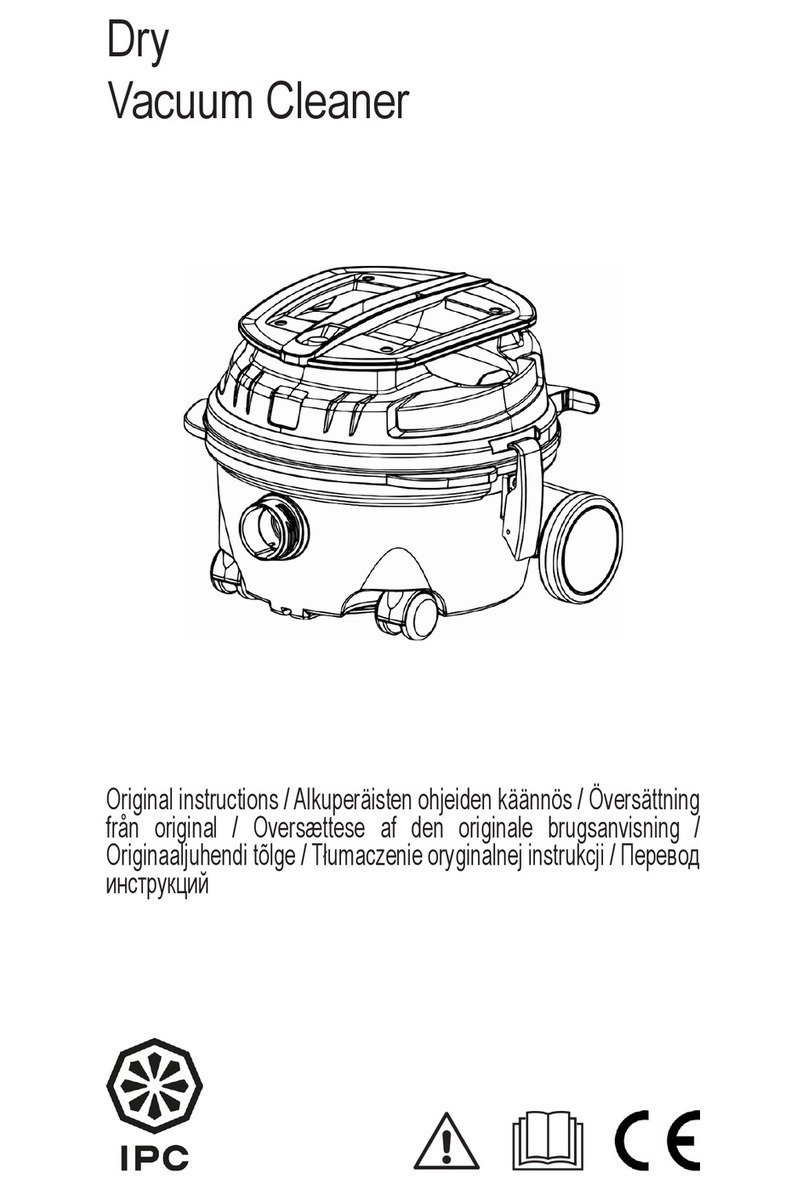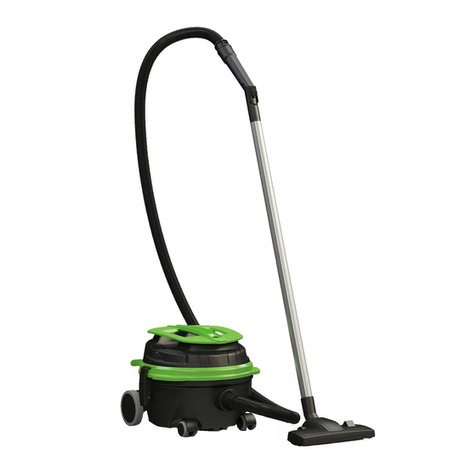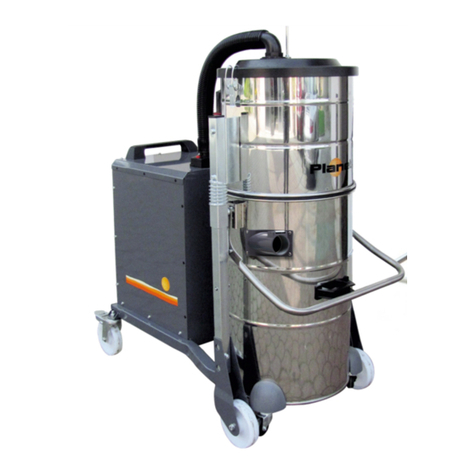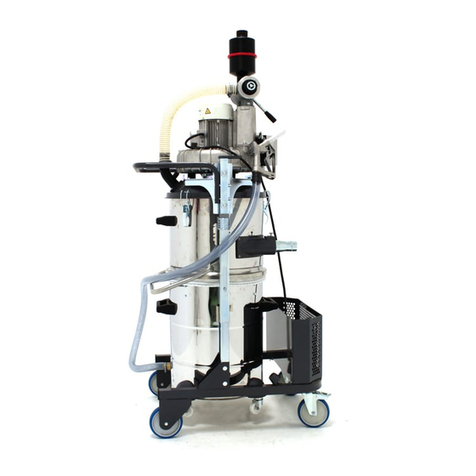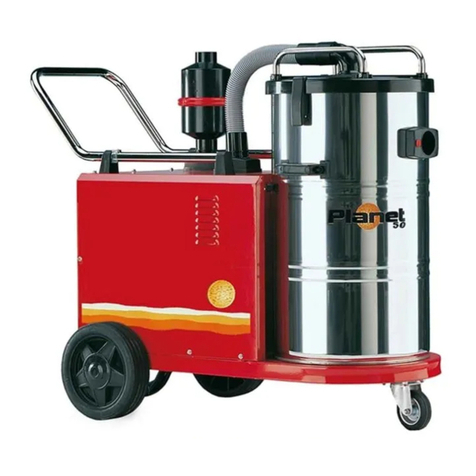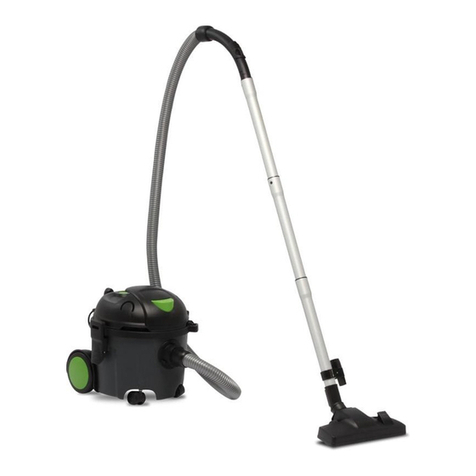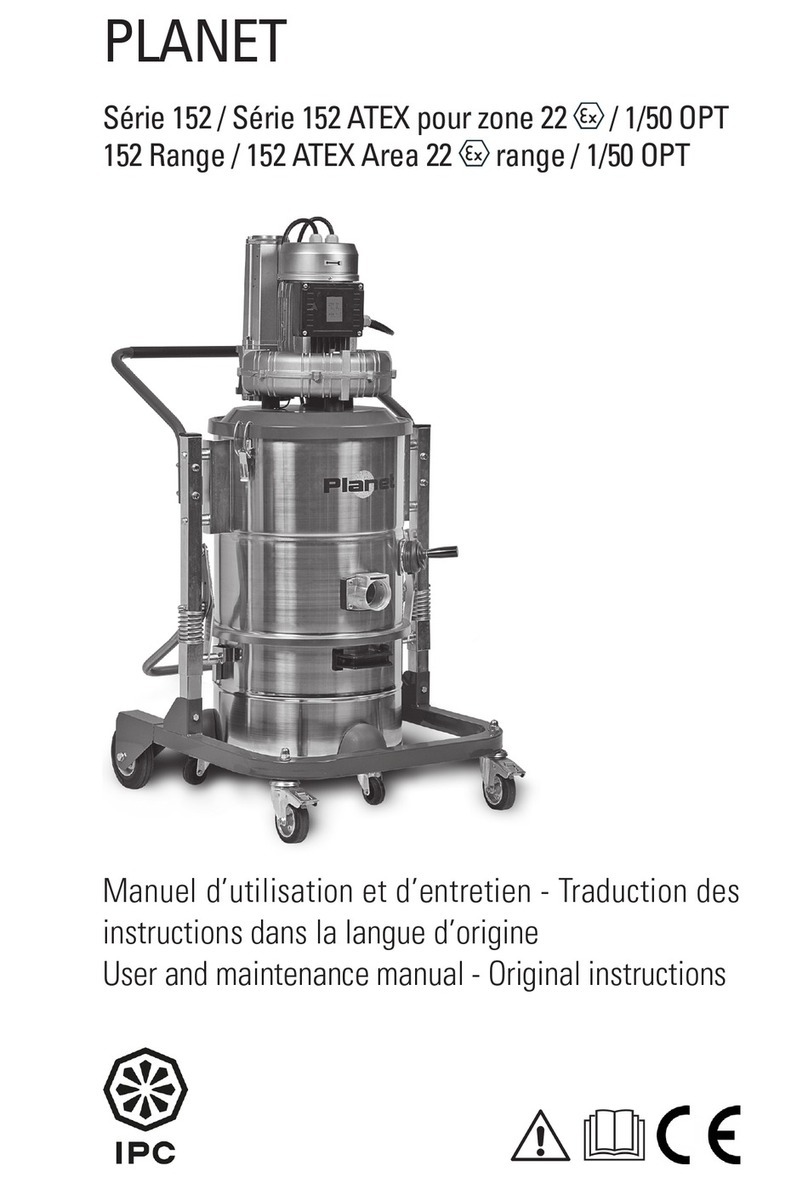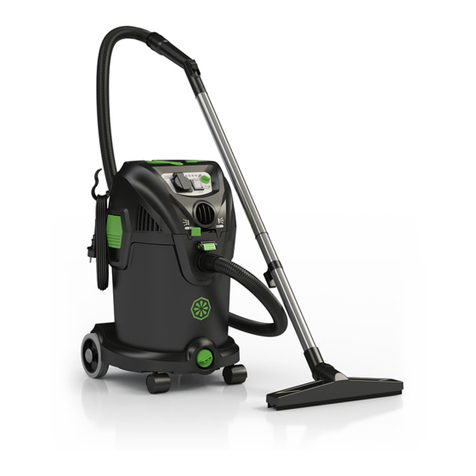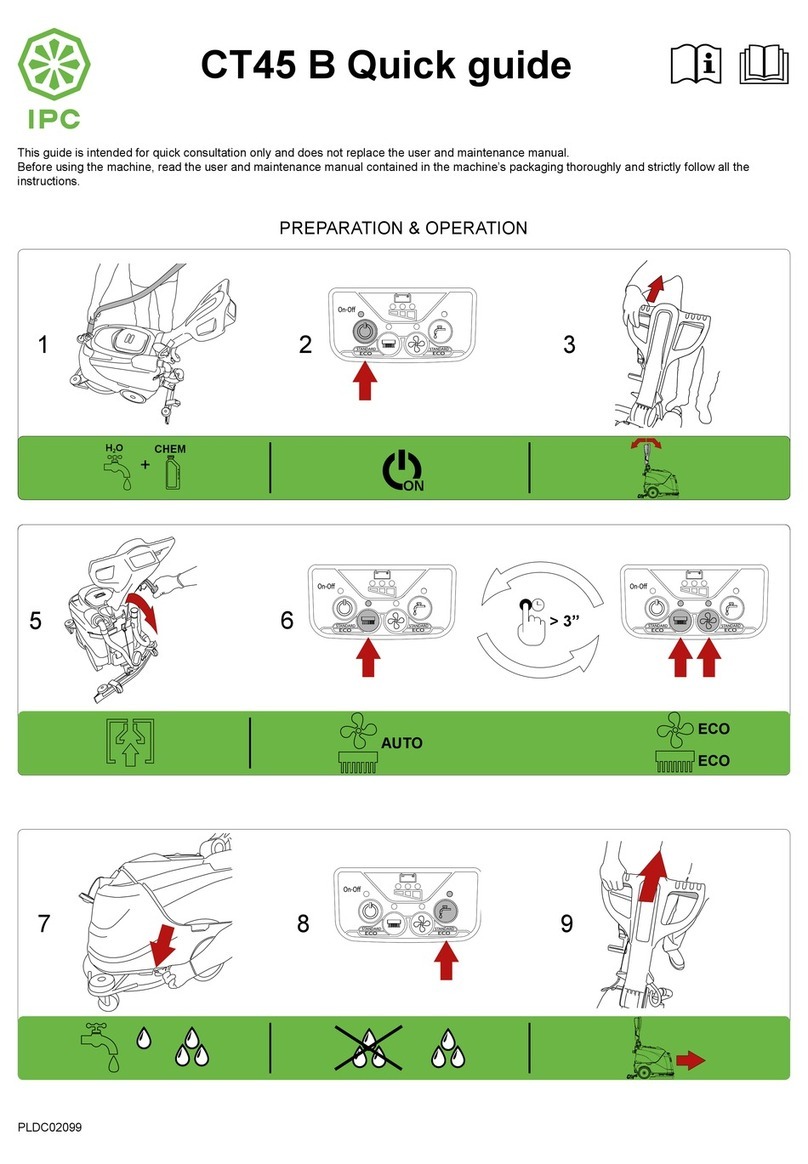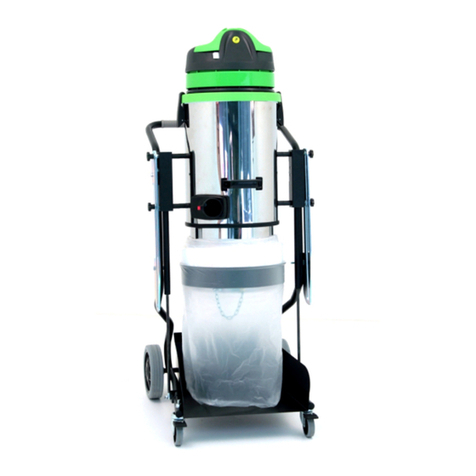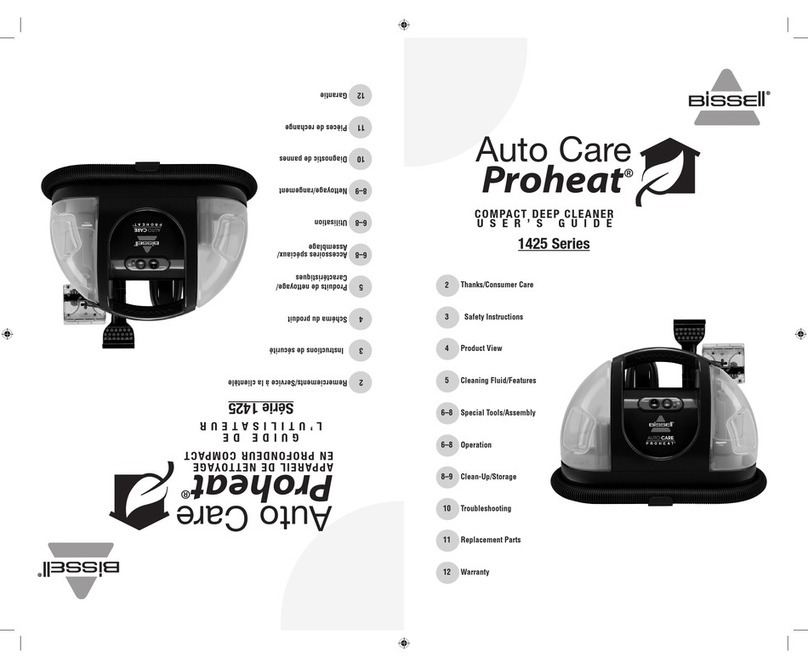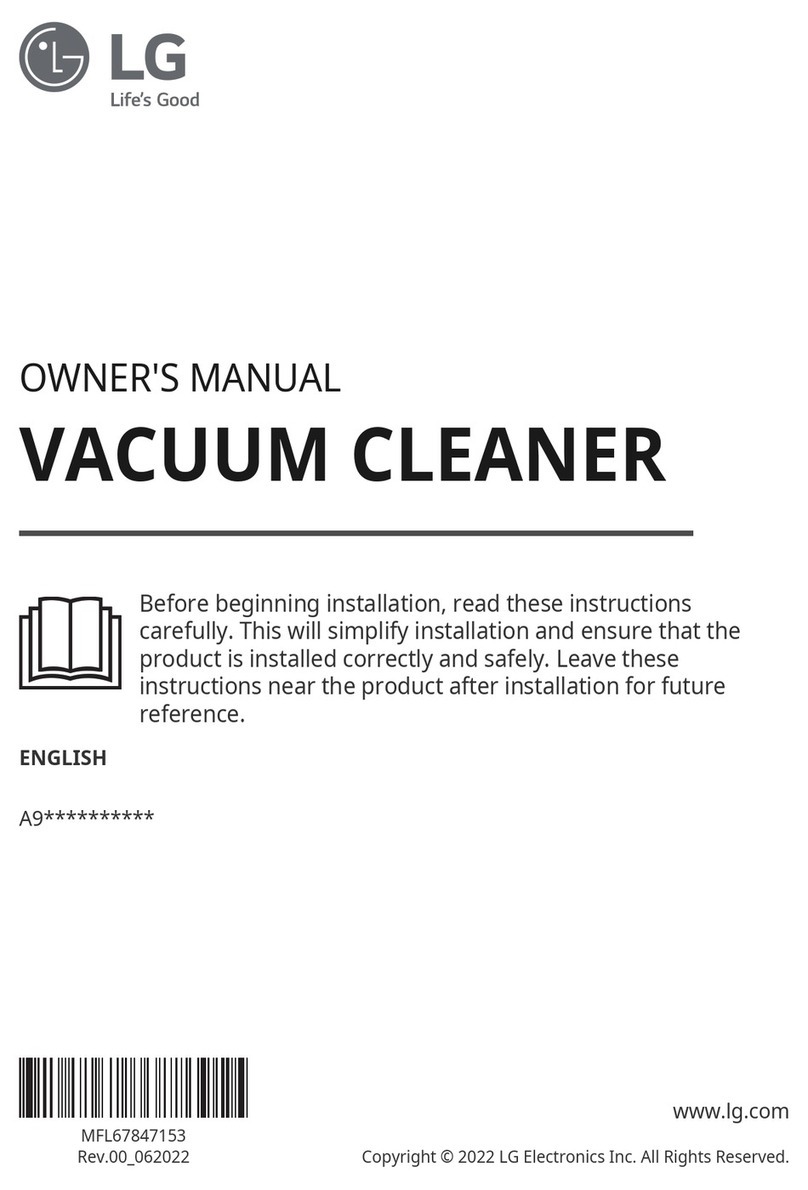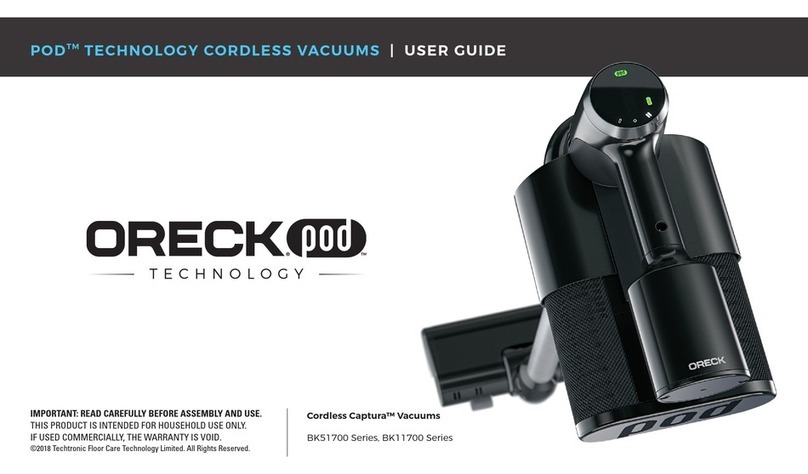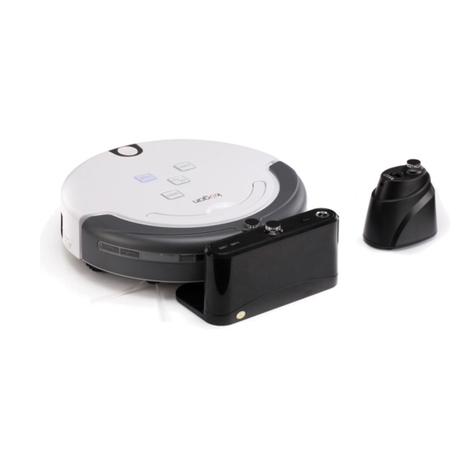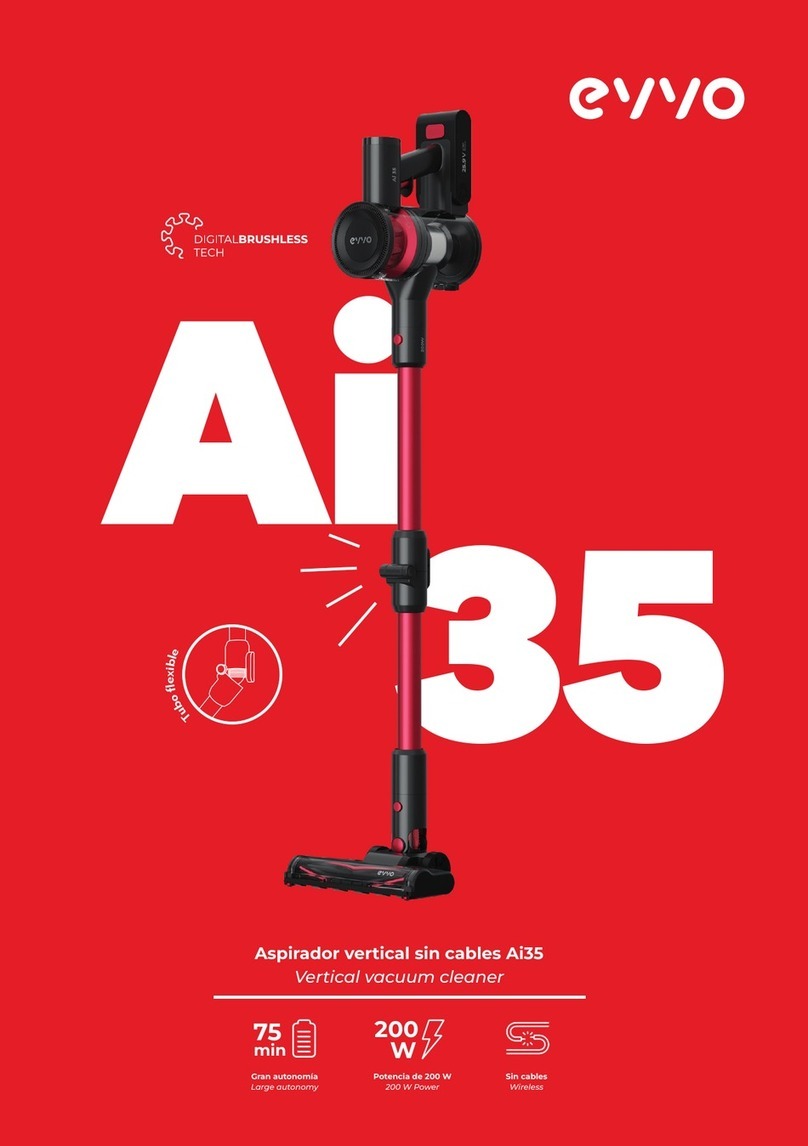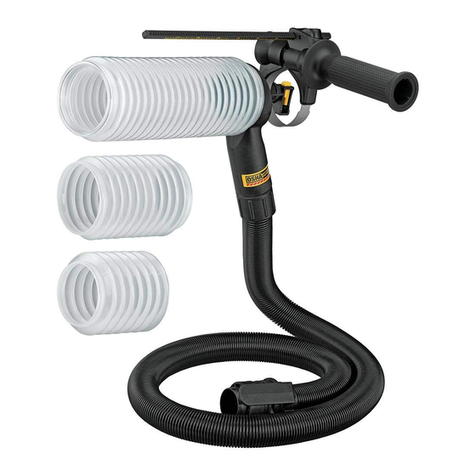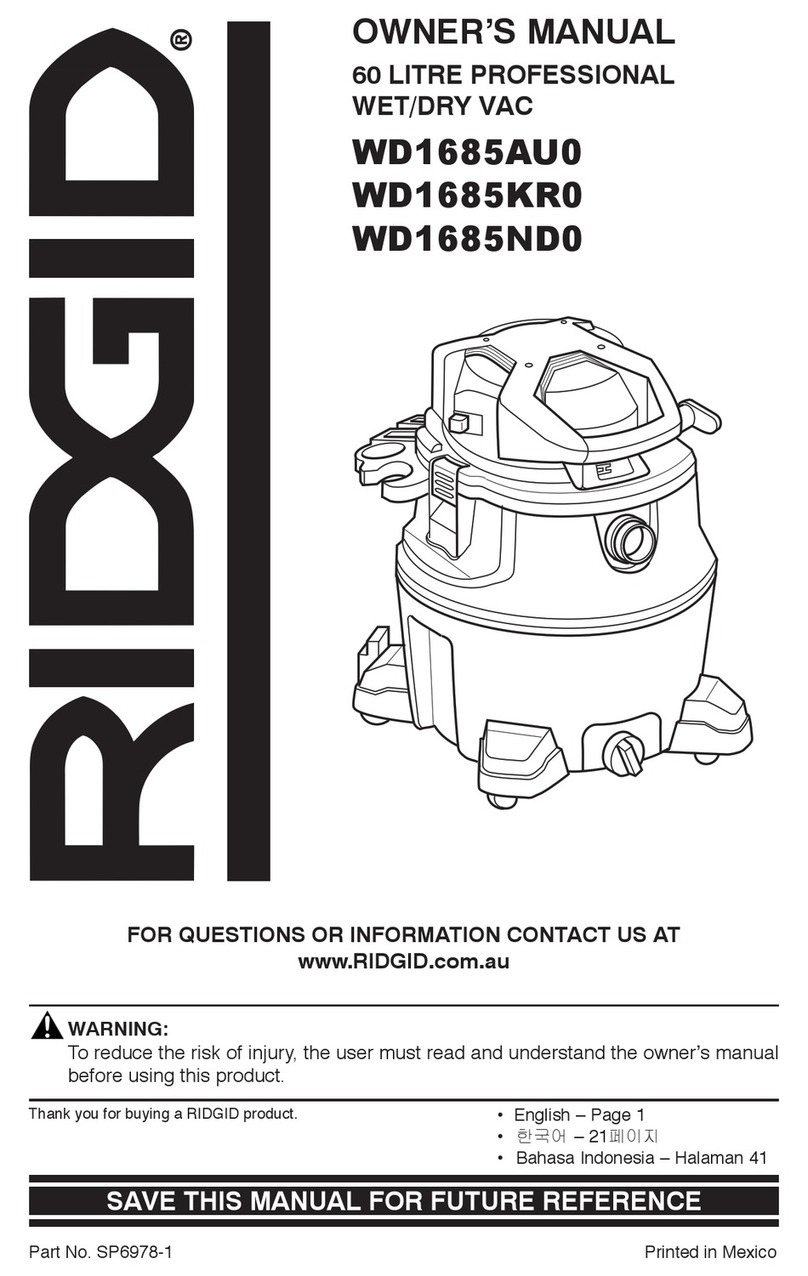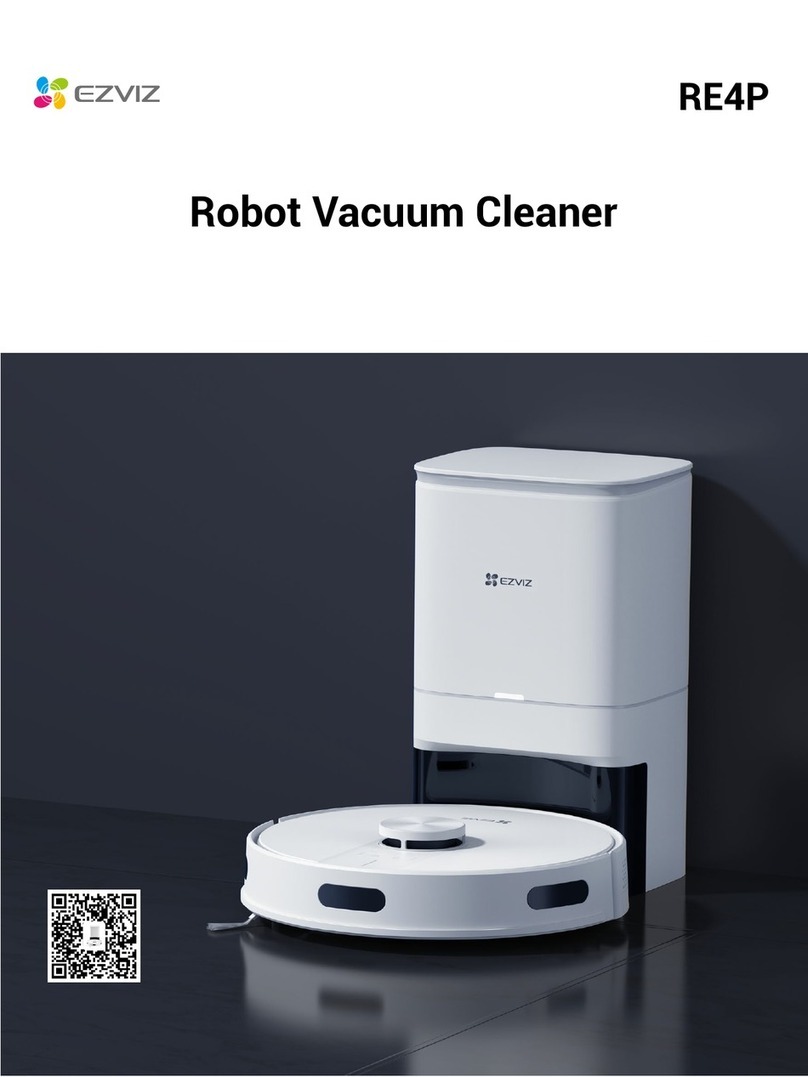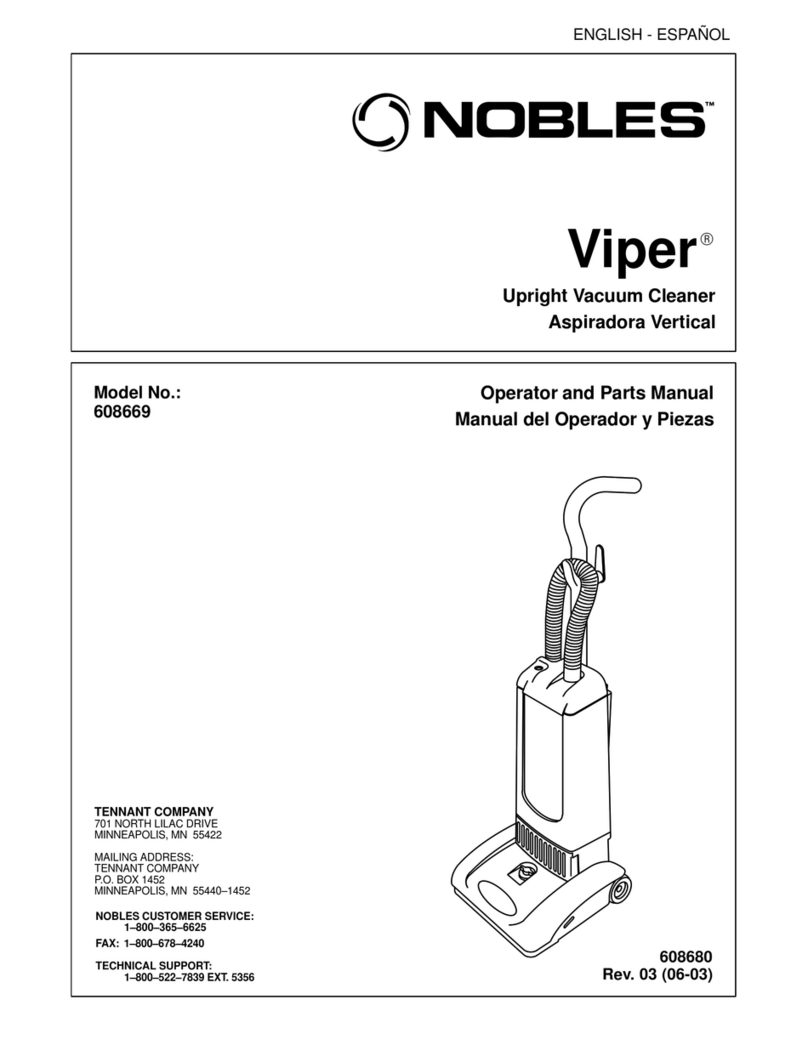
PRESCRIZIONI DI SICUREZZA
-Non aprire il serbatoio di raccolta con l’aspira-
tore in funzione.
-Prima di essere utilizzato l’apparecchio deve
essere montato correttamente in ogni sua par-
te. Vericare che gli elementi ltranti previsti
siano correttamente montati ed efcienti.
-Non superare il livello massimo di riempimento
del secchio posto all’interno del fusto di raccol-
ta residui.
-ATTENZIONE: in caso di fuga di schiuma o li-
quido spegnere il motore.
-Non aspirare acqua da recipienti, lavandini,
vasche, ecc.
-Non aspirare detergenti aggressivi poiché po-
trebbero danneggiare l’apparecchio
-ATTENZIONE: Il galleggiante ha la funzione di
arrestare l’aspirazione quando il fusto è pieno
di liquido o in caso di ribaltamento; procedere
regolarmente alla sua pulizia controllando an-
che che non presenti danneggiamenti e sosti-
tuirlo se necessario.
-ATTENZIONE: Quando il liquido aspirato rag-
giunge il corpo antischiuma, il galleggiante in-
terviene per impedire che i liquidi raggiungano
il motore. In questo caso la macchina perde il
suo potere aspirante mentre il motore continua
a funzionare. Spegnere la macchina o proce-
dere allo svuotamento del fusto.
-ATTENZIONE: è vietata qualsiasi modica
all’apparecchio. La manomissione può provo-
care incendi, danni anche mortali all’utilizzato-
re oltre al decadimento della garanzia.
-Manutenzioni e riparazioni devono essere ef-
fettuate sempre da personale specializzato;
sostituire solo con ricambi originali.
-Il fabbricante declina ogni responsabilità per
danni causati a persone o cose in seguito al
mancato rispetto di queste istruzioni o se l’ap-
parecchio viene usato in modo irragionevole.
SAFETY CONDITIONS
-Do not open the tank while the vacuum cleaner
is working.
-Every part of the appliance must be correctly
assembled before using it. Verify, furthermore,
that the ltering elements have been correctly
and efciently assembled.
-Do not exceed the maximum level of the buck-
et placed inside the tank.
-WARNING: in case of foam or liquid leakage
switch off immediately.
-Do not vacuum water from containers, sinks,
basins, etc.
-Do not vacuum corrosive soaps because they
could damage the machine.
-WARNING: The oater has the function to stop
the vacuuming when the tank is full of uids or
in case of overturning; carry out routine clean-
ing checking that it has no damage and change
it if it’s necessary.
-WARNING: When the sucked up liquid level
reaches the oater cage the oater intervene,
to avoid that the liquid reach the motor. In this
case the appliance lose its suction power while
the motor keeps working. Immediately turn off
the machine and empty the tank.
-WARNING: It is forbidden to do any kind of
change on the appliance. Tampering could
cause res and damages even lethal to the
user and the forfeiture of the guarantee.
-Specialized personnel must always carry out
maintenance and repairs; any damaged part
must be replaced with original spare parts.
-The manufacturer declines any responsibility
for damages caused to people or things due to
non-compliance of these instructions or if the
appliance is not properly used.
SEPARATORE OIL
6


